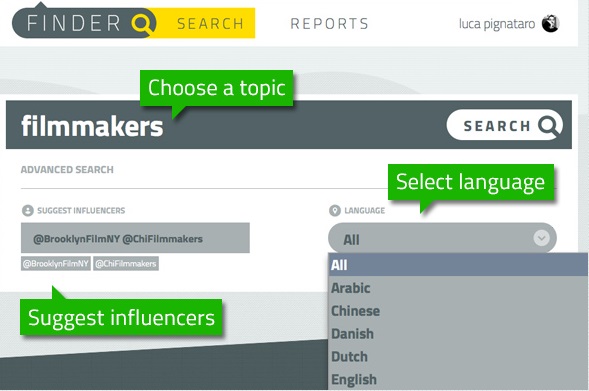If you’d asked me to prove the value of Influencer Marketing a decade ago, I’d have drawn a blank. Fortunately for advocates of this marketing tactic, today there’s solid proof that utilising an Influencer Marketing strategy can help drive engagement around your brand and generate a positive return on investment, better than any other form of digital marketing strategy.
Here’s some eye-popping data:
- According to a joint study conducted by data analytics company Annalect and Twitter, almost 40% of people purchased a product online after seeing an Influencer use it on a social network like YouTube, Instagram or Twitter. Also, another 40% followed brands on Twitter. (Source)
- The “U.S. Brand Activation Marketing Forecast (2016-2020): Key Findings Report” revealed that content marketing and Influencer Marketing are anticipated to be the quickest growing activation channels for brands through 2020. (Source)
- US digital advertising solutions specialist Rhythm One discovered that the average EMV (earned media value) for every dollar companies spent on Influencer Marketing is $9.60, which converts into a 960% ROI. (Source)
No more unsolicited claims. Looking at these pieces of data can give marketers a sense of their return.
The Size of the Influencer Marketing Industry
If you’ve ever inquired about the size of the Influencer Marketing industry, you’ve likely heard numbers like $10 million to $1 billion, bandied about the place. And with a quick search on Google, you get thousands of results throwing estimates all over the place.
Yep, it’s easy to get confused.
That’s why I mostly look for solid research pieces that talk about industry size after conducting studies, rather than putting out rough estimates. For instance, Mediakix talks about the size of the Influencer Marketing industry by making calculations through a coherent marketing methodology.
In order to find how many brand sponsored Influencer posts exist on various social networks, they tracked hashtags related to sponsorships, such as #spon, #sp, #ad and #sponsored. On Instagram, there has been a rise of 4.8 million mentions of these hashtags in the past year.
They also discovered that the average follower size of Instagram accounts publishing sponsored posts was 32,000. With an average $10 CPM (cost per thousand impressions), the estimate comes to $320 per post and an overall monthly spend of $90 million. This should put the total annual spend at more than $1 billion. That’s a hefty amount of marketing dollars!
And with the current yearly growth rate, the Influencer market could achieve a $130 million monthly spend by March 2018 and around $200 million monthly spend by March 2019, with almost $2.4 billion invested on Instagram Influencer campaigns alone.
So far I’ve only mentioned Instagram. There’s also Pinterest, LinkedIn, YouTube, Facebook, Snapchat, WhatsApp and other social media channels. Add this to the numbers above and it will give you an idea of the sheer size of the Influencer Marketing industry.
As for the individuals who make up the industry, the Influencers, they can gain a variety of rewards depending on their influence level, from prizes, to event invitations, to free products, all the way up to payment for top Influencers. This payment varies and covers a variety of factors, including usage rights, engagement rate, follower size and exclusivity.
The Future: Customer Acquisition via Influencer Marketing
Influencer Marketing has conventionally been utilised as a top of the funnel marketing tactic to generate engagement and word-of-mouth around a product or brand, but it’s already been touted as the fastest-growing digital customer-acquisition channel, ranking above paid search, email marketing and organic search.
For instance, Crunchyroll, a streaming platform focused on content from leading Asian media producers, endorsed their 30-day free trial of their premium service with the help of Influencers like Game Grumps. The popular YouTubers made a video, and described Crunchyroll in a light-hearted sketch. To help the brand with customer acquisition, they included a unique link in the description of the video. Customers who signed up via this link could receive a free 30-day trial of the company’s premium service. The video is about to reach 2 million views. This is a great example of finding relevant Influencers, in this case entertainment Influencers for an entertainment channel, to promote your product to potential new customers, providing both an awareness of your service and the incentive to take a look.
The growth of the Influencer Marketing industry can be seen in our own growth: +99% compared to last year with 341 active campaigns.
This shows us that Influencer Marketing is a strategy that is well suited to the new needs and objectives of today’s brands that need to engage their customers within their everyday life and stick with them until the final conversion. As a result, more brands will invest in Influencer Marketing campaigns and use metrics like signups and sales to measure their success. For more information on a campaign such as this, you can get in contact with Buzzoole’s wonderful sales team.
In a nutshell, Influencer Marketing is expected to remain an integral part of the overall marketing mix in the upcoming years as firms realize that the proven value and cost efficiency of this strategy enables them to put their focus in non-conventional tactics that drive results. Influencer Marketing has proven its viability, and, while it will continue to evolve, it is a marketing strategy that will definitely be sticking around.



